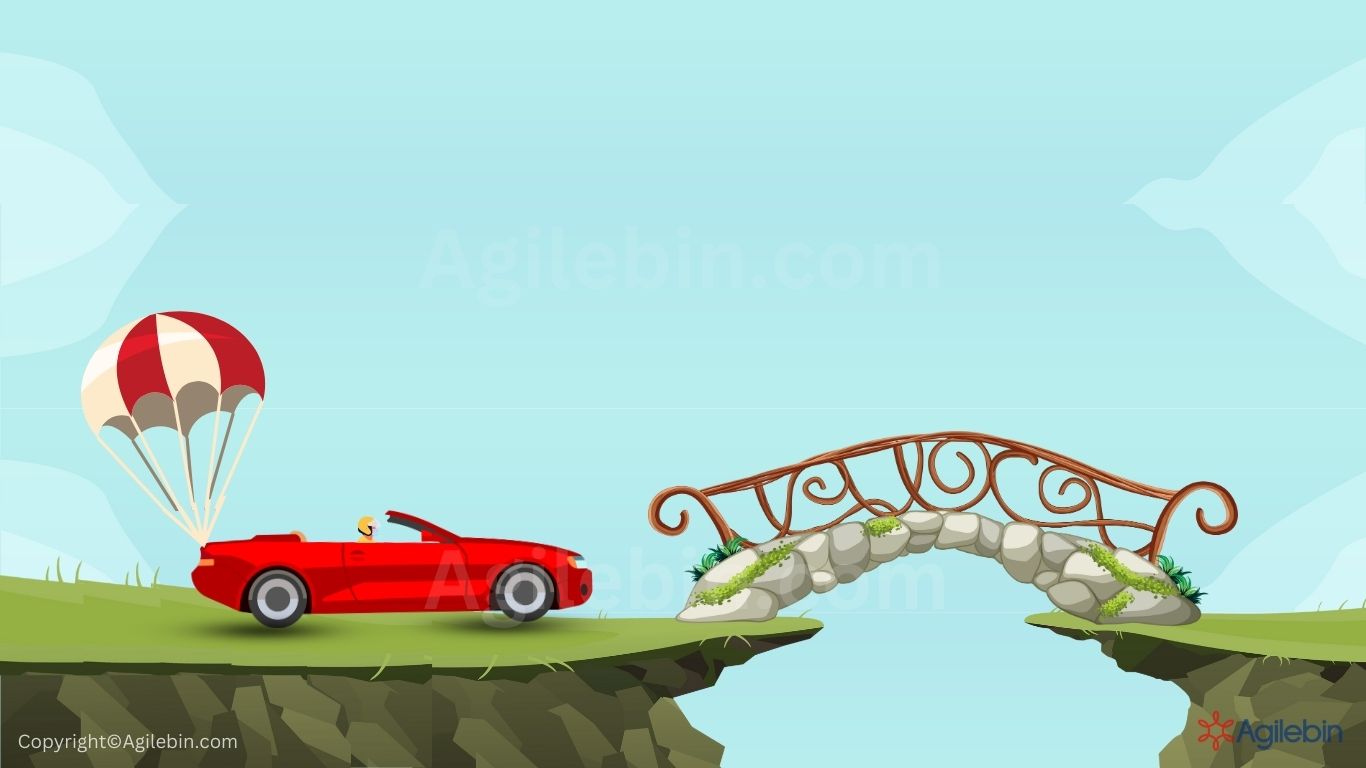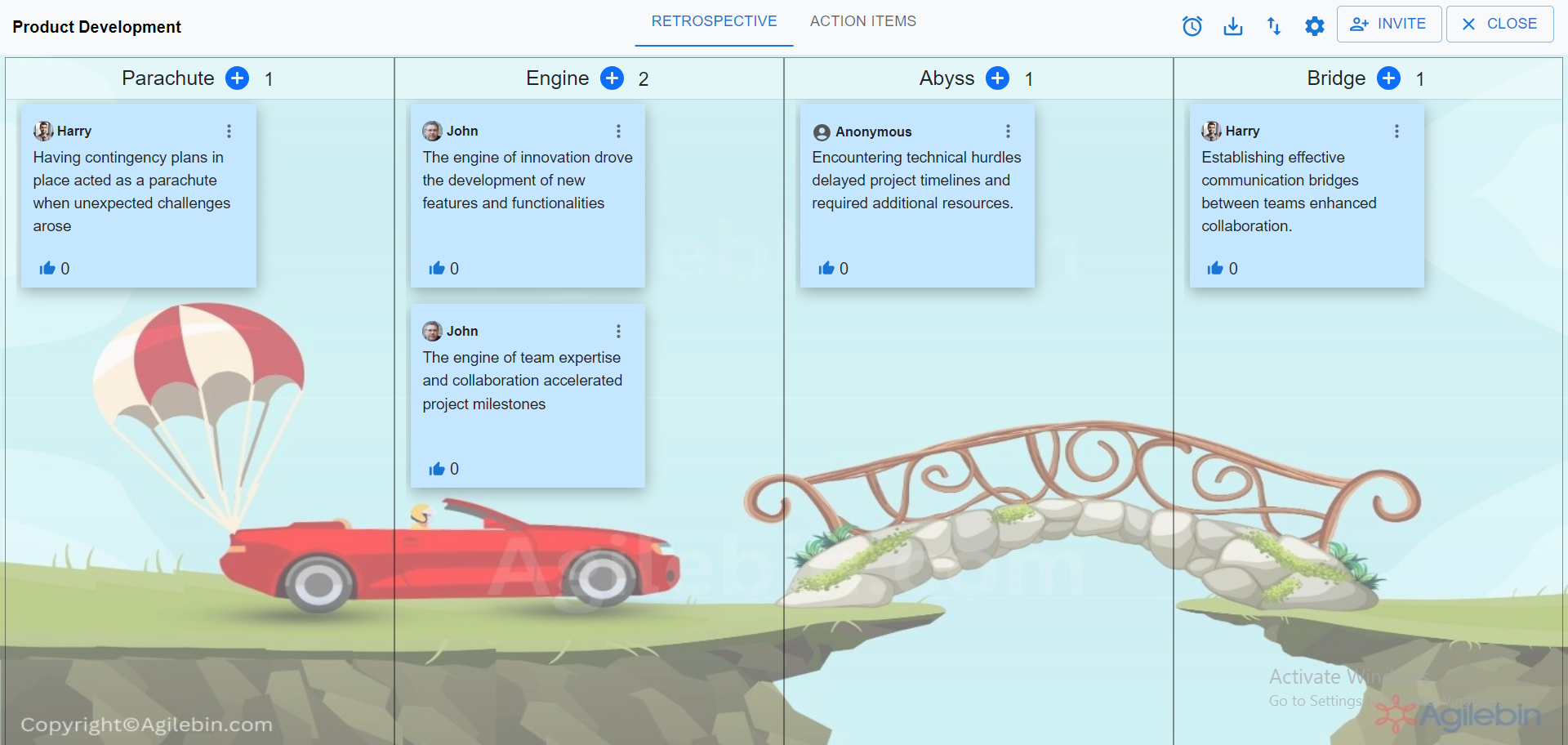Speed Car Retrospective
A Speed Car Retrospective uses the metaphor of a car race to help teams reflect on their performance, identify obstacles, and plan for future improvements.

What is a Speed Car Retrospective?
The Speed Car Retrospective is a creative and dynamic way for agile teams to reflect on their performance using the metaphor of a race car. This format encourages team members to think about the factors that are propelling them forward, the obstacles slowing them down, and the actions they can take to improve their speed and efficiency. The retrospective focuses on identifying actionable improvements based on the metaphor.
How to Conduct a Speed Car Retrospective?
Conducting a Speed Car Retrospective involves several key steps:
- Prepare the Environment: Set up a comfortable and distraction-free environment. Provide materials such as sticky notes, markers, and a board or wall space for visualizing ideas.
- Set the Stage: Explain the concept of the Speed Car Retrospective and its purpose. Emphasize the importance of thinking creatively and openly about the factors influencing the team's performance.
- Gather Data: Ask team members to reflect on the iteration and identify what acted as accelerators (helping the team move faster) and what acted as brakes (slowing the team down). Write each point on a separate sticky note or card.
- Sort and Prioritize: Facilitate a discussion where team members categorize and prioritize their inputs. Group similar points together and identify the most impactful or feasible ones to address first.
- Discuss and Reflect: For each prioritized point, discuss why it is important and how it can be transformed into an actionable item. Consider the potential impact and feasibility of implementing the suggestions.
- Identify Action Items: Collaboratively identify actionable items based on the prioritized points. Focus on specific actions that can be taken to address obstacles and leverage accelerators to improve team performance.
- Assign Ownership: Assign ownership and accountability for each action item to ensure follow-through. Clearly define responsibilities, deadlines, and success criteria for each action item.
- Close the Retrospective: Summarize key insights, action items, and next steps. Ensure everyone is aligned on the outcomes and commitments made during the retrospective. Thank the team for their participation and emphasize the importance of continuous improvement.
Columns in Speed Car Retrospective
In a Speed Car retrospective, the columns typically represent different aspects of the project or team dynamics that can either hinder or help progress. Here's how each column in the Speed Car retrospective can be understood and used:
- Parachute: The parachute represents anything that is slowing the team down. These are the obstacles, challenges, or bottlenecks that are impeding progress.
- Engine: The engine represents the driving forces or factors that are propelling the team forward. These are the strengths, positive influences, or successful practices that enhance productivity and progress.
- Abyss: The abyss represents the risks or potential pitfalls that could derail the project or the team’s progress. These are the dangers that the team needs to be aware of and mitigate.
- Bridge: he bridge represents the solutions or actions that can help the team overcome obstacles (parachutes) and avoid risks (abysses). These are the strategies or changes that can lead to improvement and help the team move forward smoothly.
When to Conduct a Speed Car Retrospective?
The Speed Car Retrospective is best conducted at the end of a project milestone, sprint, or other significant period of work. It provides an opportunity for the team to reflect on recent activities, gather insights, and make adjustments for future iterations. Here are some key timings for conducting a Speed Car Retrospective:
- End of a Sprint: Agile teams often conduct retrospectives at the end of each sprint, typically lasting two to four weeks. This allows the team to reflect on their performance, adapt their processes, and improve collaboration before starting the next sprint.
- End of a Project Phase: When a project reaches a significant milestone or completes a phase of development, a retrospective can help the team review their progress, identify lessons learned, and make necessary adjustments before proceeding to the next phase.
- After a Major Event or Release: Following the completion of a major event, such as a product release, a conference, or a customer demonstration, a retrospective can provide valuable insights into what went well, what didn't, and how to improve for future events.
- Periodic Reviews: Teams may also schedule regular retrospectives at fixed intervals, such as monthly or quarterly, to continuously evaluate their performance, foster a culture of continuous improvement, and address any emerging issues proactively.
How can you conduct a Speed Car retrospective with Agilebin?
Effortlessly conduct a Speed Car retrospective with Agilebin's ready-to-use template!
Why Agilebin's template? Because it provides a realistic and immersive experience, making your Speed Car retrospective feel authentic and meaningful. With Agilebin's ready-to-use template, you'll feel like you're navigating through the actual process, allowing for a more effective and insightful retrospective session.
Choose Speed Car retrospective template in Agilebin
Choose the Speed Car Retrospective template from Agilebin's collection of retrospective templates. This template is specifically designed to facilitate the Speed Car Retrospective process, providing a structured framework for your team's reflection and improvement discussions
Invite team members to participate in the retrospective session
Invite team members to participate in the retrospective session by adding their email addresses or sharing the session link directly with them. You can choose between public access using a link, allowing anyone with the link to join, or restricted access, limiting participation to specific users or teams.

Facilitate Discussion with Sticky Notes
Agilebin offers pre-defined columns for the Speed Car Retrospective, including "Parachute," "Engine," "Abyss," and "Bridge." Participants can add sticky notes to each column during the retrospective session, sharing their feedback, observations, and suggestions
